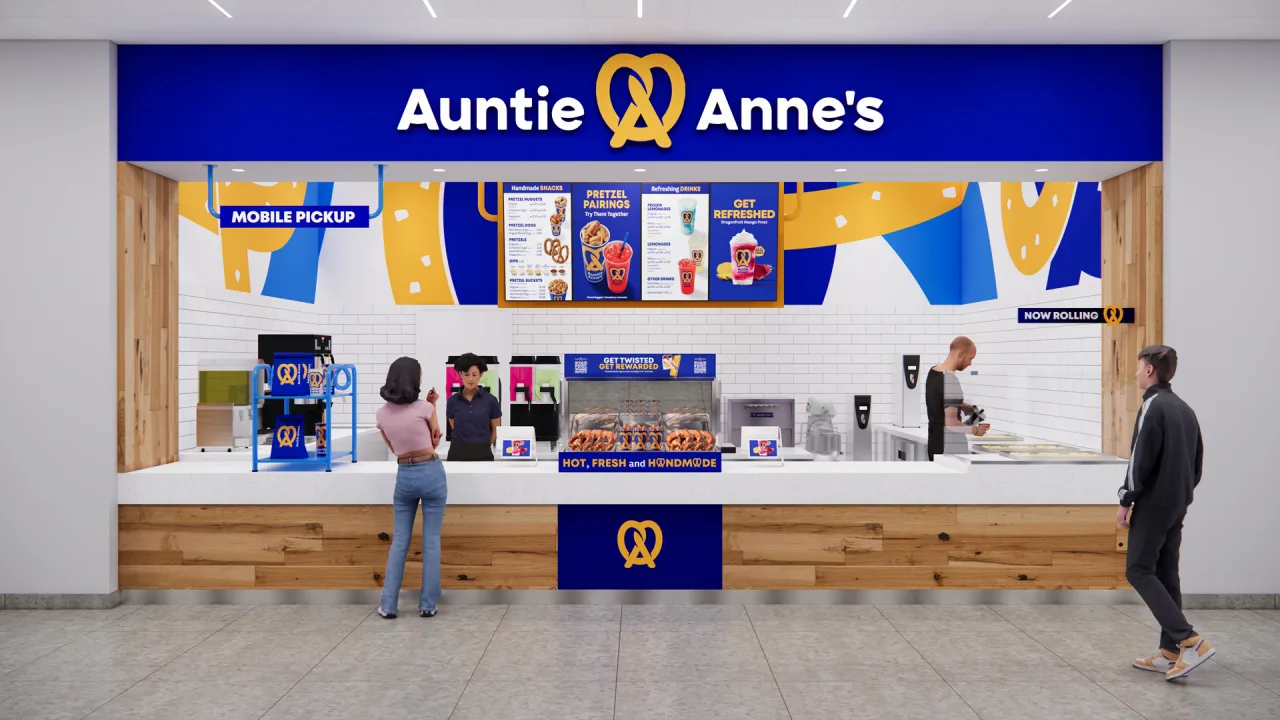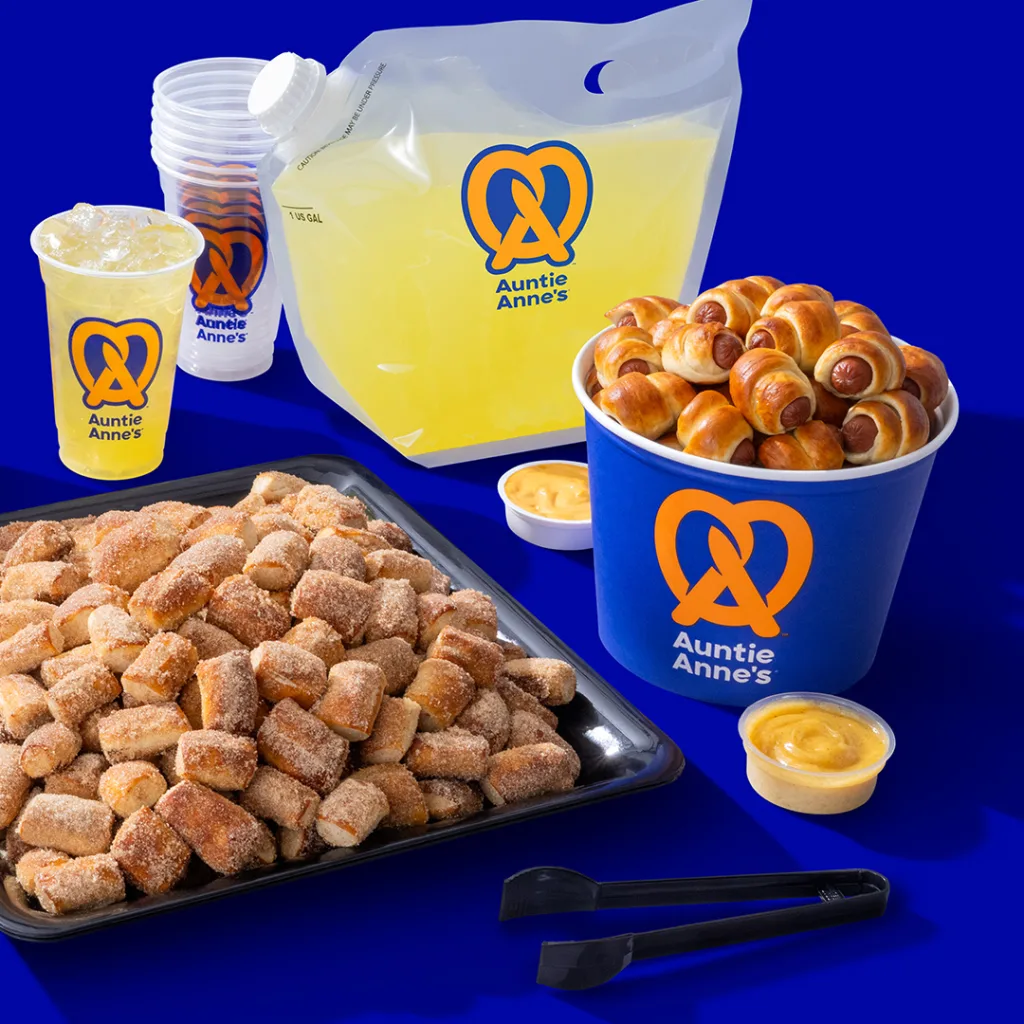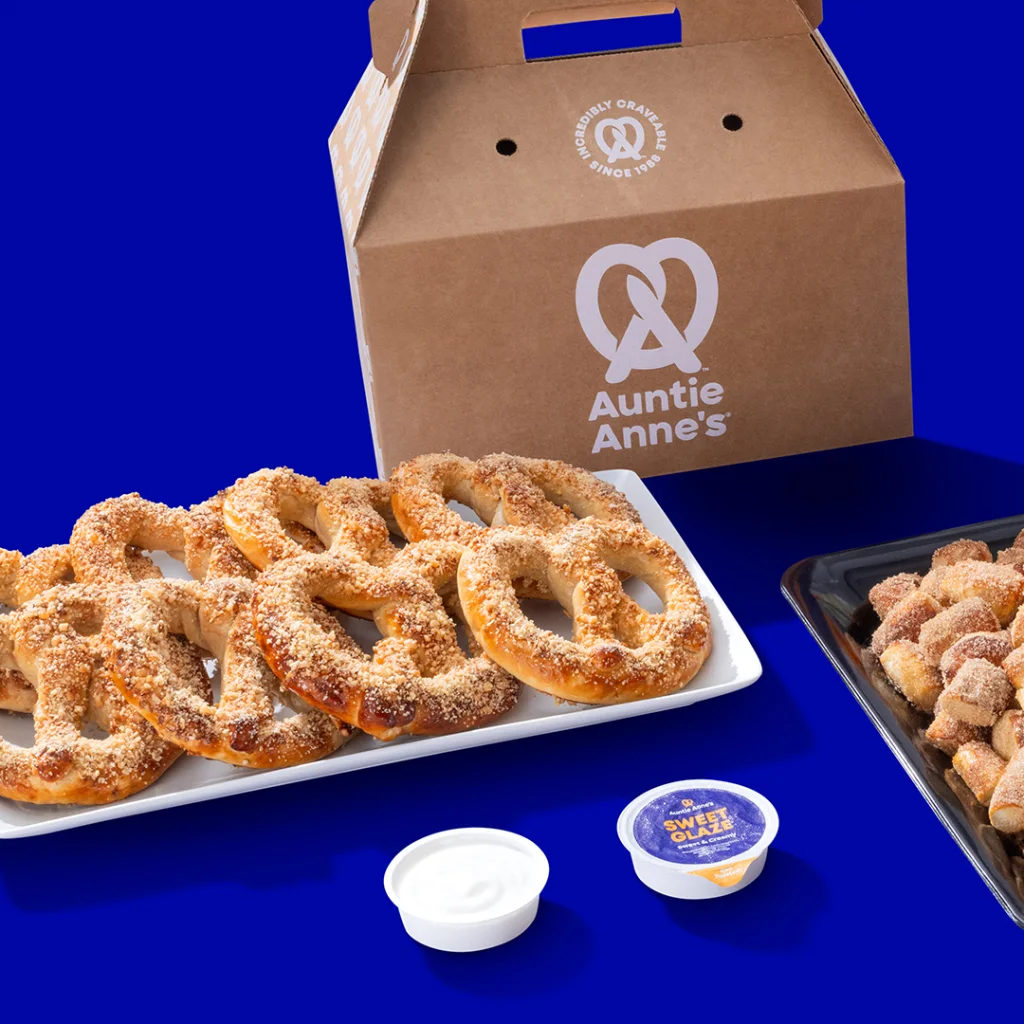Auntie Anne’s is rebranding for a future with fewer shopping malls
How do you take a mall food court brand and future-proof it for a world with fewer malls? For Auntie Anne’s, the answer is modernizing the stores they already have with a new concept designed for the way people snack now. Auntie Anne’s said Monday it would remodel 150 stores this year with a new store concept and a modernized visual identity designed to sell more of its pretzels, drinks, and snacks to millennial and Gen Z consumers at a time of changing habits. With consumers interested in mobile ordering, grab-and-go food, and novel experiences, the updated Auntie Anne’s store concept has a dedicated mobile order pickup area and an open view into the kitchen with a “Now Rolling” sign to draw attention to employees rolling pretzels by hand. [Photo: Auntie Anne’s] “Consumer expectations have shifted, especially around digital convenience, off-premise access, and visual appeal,” Mike Freeman, president of brands at Auntie Anne’s holding company GoTo Foods, tells Fast Company in an email. The redesigned stores were made to meet those expectations. “It reflects how guests want to engage today with speed, transparency, and a space that feels fresh and energetic,” Freeman says. A new blue and yellow “twist” mural pattern gives the store a more modern and colorful look, and an updated Auntie Anne’s logo is simpler and does without the old halo element of the outgoing logo. [Photo: Auntie Anne’s] Founded in the height of the shopping mall era in 1988, today Auntie Anne’s has more than 2,000 locations in shopping malls, outlets, airports, universities, Walmarts, travel plazas, military bases, and food trucks. Its owner, GoTo Foods, operates or franchises more than 6,900 restaurants and cafés for brands including Cinnabon, Jamba, and Schlotzsky’s. Malls and airports are “core to Auntie Anne’s heritage and continue to play a key role in the brand’s footprint,” Freeman says, but expansion is also key. The brand plans for growth that includes street side and co-branded locations, and it’s open to partnerships and cross-branded collabs with Oreo and Hidden Valley Ranch. The rebrand is about selling a nostalgic snack in a more contemporary way. Revitalizing a food court favorite that’s outlived many of the shopping malls it once occupied is no small feat, and updating the store’s look and feel could go a long way in keeping it relevant.

How do you take a mall food court brand and future-proof it for a world with fewer malls? For Auntie Anne’s, the answer is modernizing the stores they already have with a new concept designed for the way people snack now.
Auntie Anne’s said Monday it would remodel 150 stores this year with a new store concept and a modernized visual identity designed to sell more of its pretzels, drinks, and snacks to millennial and Gen Z consumers at a time of changing habits. With consumers interested in mobile ordering, grab-and-go food, and novel experiences, the updated Auntie Anne’s store concept has a dedicated mobile order pickup area and an open view into the kitchen with a “Now Rolling” sign to draw attention to employees rolling pretzels by hand.

“Consumer expectations have shifted, especially around digital convenience, off-premise access, and visual appeal,” Mike Freeman, president of brands at Auntie Anne’s holding company GoTo Foods, tells Fast Company in an email. The redesigned stores were made to meet those expectations.
“It reflects how guests want to engage today with speed, transparency, and a space that feels fresh and energetic,” Freeman says.
A new blue and yellow “twist” mural pattern gives the store a more modern and colorful look, and an updated Auntie Anne’s logo is simpler and does without the old halo element of the outgoing logo.

Founded in the height of the shopping mall era in 1988, today Auntie Anne’s has more than 2,000 locations in shopping malls, outlets, airports, universities, Walmarts, travel plazas, military bases, and food trucks. Its owner, GoTo Foods, operates or franchises more than 6,900 restaurants and cafés for brands including Cinnabon, Jamba, and Schlotzsky’s.
Malls and airports are “core to Auntie Anne’s heritage and continue to play a key role in the brand’s footprint,” Freeman says, but expansion is also key. The brand plans for growth that includes street side and co-branded locations, and it’s open to partnerships and cross-branded collabs with Oreo and Hidden Valley Ranch.
The rebrand is about selling a nostalgic snack in a more contemporary way. Revitalizing a food court favorite that’s outlived many of the shopping malls it once occupied is no small feat, and updating the store’s look and feel could go a long way in keeping it relevant.








































































![https //g.co/recover for help [1-866-719-1006]](https://newsquo.com/uploads/images/202506/image_430x256_684949454da3e.jpg)
























![[PATREON EXCLUSIVE] The Power of No: How to Say It, Mean It, and Lead with It](https://tpgblog.com/wp-content/uploads/2025/06/just-say-no.jpg?#)

























































